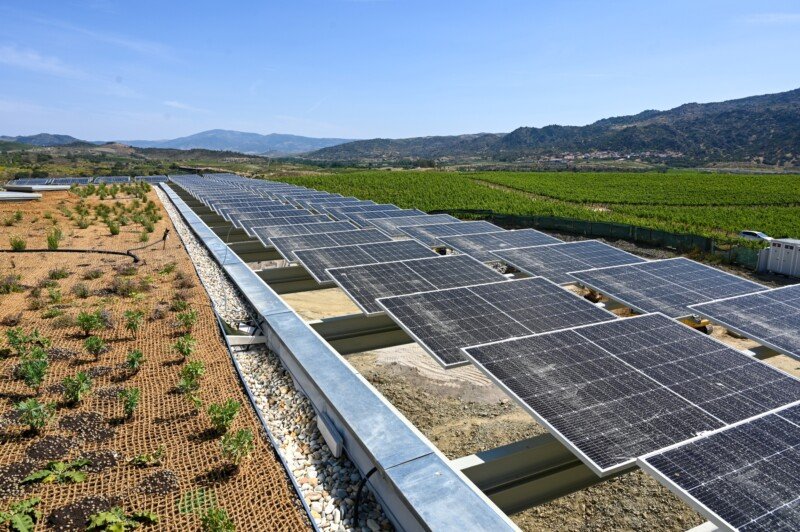Portugal’s other revolution: A closer look at the evolution of Portuguese winemaking
Following the country’s celebration of the 50th anniversary of the Carnation Revolution, we look back on the evolution of Portuguese winemaking over the last five decades
Many Portuguese had never known anything else. After 41 dark years, Portugal’s Estado Novo regime tilted over and expired, worn out. The far-right dictatorship, personified by the sinister Dr António de Oliveira Salazar kept Portugal isolated and poor for nearly half a century. The end came, in Lisbon on April 25, 1974, in an almost peaceful military coup by left-sympathising officers, some placing carnations in their gun barrels.
The Carnation Revolution opened the way to huge economic and social changes. Within 12 years, Portugal had joined the European Communities, the future European Union. No longer an outsider, the country was now aligned with a common European destiny.
In the 50 years since the Carnation Revolution, one of Portugal’s greatest success stories has arguably been its wine industry – a second Portuguese ‘revolution’. Portugal had for centuries been a significant wine producer, but the Salazar years offered no economic incentive to produce wines of real quality. Just as their fathers had done before them, farmers delivered their grapes to the ubiquitous cooperative where they were made into rough wines that often had the kick of a mule.
Symingtons – Quinta do Ataíde, Douro
Under a more tolerant political climate, monopolistic constraints began to crumble and the cooperatives’ role weakened. European Union funds flowed into Portugal’s wine sector, with state grants and low interest loans to renovate vineyards and build state-of-the-art wineriesequipped with the latest winemaking technology. Between the late 1980s and 2021, the area under vine nearly halved from 385,000 to 185,000 hectares, ushering in an exponential shift from quantity to quality.
Geography is central to winemaking. Portugal’s 11 wine regions, from north to south (Portugal is just under 600km long by around 200km wide), and on to the islands of the Azores and Madeira, are blessed by an unusual diversity of climatic conditions, altitudes and sun exposures.
Portugal also boasts an exceptional number of indigenous grape varieties, at around 250 more than almost anywhere else in the world. New generations of winemakers now began to ponder “what if?”, conducting viticultural experiments at boutique wineries.
Niepoort Wine Cellar, Gaia
Although respect for previous generations of winemakers is still common, empirical knowledge – the way dad did it – is no longer enough. In the decades since the 1980s, Portugal’s winemakers have become uncontestably better trained, attending new domestic wine courses (for example the excellent course at UTAD – University of Trás-os-Montes and Alto Douro), or studying overseas, at Bordeaux, for instance, Rioja or even in Australia.
The new political and economic environment offered fertile ground for creativity and entrepreneurial mindsets. Parallel to international training or winemaking experience for Portuguese winemakers (David Guimaraens of The Fladgate Partnership studied in Australia and Rita Marques of Conceito has worked in the US, South Africa and New Zealand), Portugal began to embrace international winemaking partnerships and welcome consultants from the Old and New Worlds – in the Douro, the Symingtons make wines with Bruno Prats of Bordeaux fame, and Quinta do Crasto worked with the late legend Jean-Michel Cazes; while the Australian David Baverstock has made wines in the Douro and Alentejo for three decades.
A lighter touch to winemaking driven by these influences has inspired a wave of outstanding white wines, previously a rarity in a country dominated by its reds. Once looked down on as “cheap and cheerful”, Vinho Verde is currently producing some impressive wines with Loureiro, Alvarinho and Avesso grapes. In the Dão, the star variety is the aromatic Encruzado, sometimes said to rival good white Burgundy. In the Douro, a number of producers are achieving promising results with Rabigato, Viosinho and Gouveio, often planted at altitude to produce fresher wines.
One fine wine had been produced in Portugal for generations: Port. In the 1990s, a number of forward-looking Port producers realised that the Douro, where the grapes for Port production are grown, had all the conditions to equally make outstanding still wines, first reds and then whites. The young winemakers of Quinta do Crasto, Quinta do Vallado, Quinta Vale Meão, Niepoort and Van Zellers, banded together to form the charismatic Douro Boys, achieving considerable success in marketing their wines in Portugal and internationally. Port has been skilful in rejuvenating its image, focusing on the premium market and styles which appeal to younger drinkers, such as white Port and tonic.
Filipa Pato
Traditionally male-skewed, Portugal’s wine industry today also counts a brochette of star women winemakers. Joana Maçanita (sister of Antonio Maçanita) makes wines in several regions, including the Algarve where she works with the Negra Mole grape; Filipa Pato is the ‘princess’ of the Baga grape in Bairrada; and Sandra Tavares da Silva makes spectacular wines in the Douro with her husband, Jorge Serôdio Borges, at Wine & Soul.
Unsurprisingly, two of the highest-profile writers today about Portuguese wines are also women: Julia Harding (JancisRobinson.com) and Sarah Ahmed (Decanter, Revista de Vinhos).
Julia Harding © Sakhi Londra
Climate change is placing pressure on agricultural products worldwide. Our beloved wine is no exception. Fortunately, a number of adaptation measures are possible and several Portuguese producers are engaged in groundbreaking research into grape varieties resistant to drought and heat, and reviving some of the old varieties present in Portugal’s precious field blends. Low-intervention farming is also spreading, with the Symingtons leading the way as members of the influential IWCA (International Wineries for Climate Action), fighting for a decarbonised wine industry.
The last 50 years have seen the seemingly unstoppable upward trajectory of Portuguese wines, from their post-Revolution inconsequence to international renown, driven by the surge in exports that followed the 2007-08 financial crisis.
With difficult-to-sell small batches, quirky names, and esoteric grape varieties, Portugal’s wine producers have had to fight hard to gain international shelf space. Simplified marketing of mono-varietals, more contemporary labelling, cultivation of imaginative wine tourism, and the opening of Portuguese restaurants and wine bars from San Francisco to London, have all contributed to this success.
Despite all the welcome attention, Portuguese wines remain, for now at least, remarkably good value compared to their international peers. Don’t have any regrets, please drink now!
First published Essential Algarve April 2024






